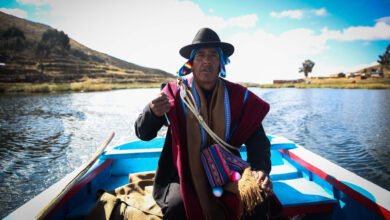Study states that 64% of agricultural land is under threat of contamination
The report shows that two out of three thirds of the agricultural land on planet is at risk of contamination from the use of pesticides.

The research analyzes the risk to the soil, atmosphere and surface and groundwater, showing that Asia is the area that represents the most risk. Photo: Pexels
LatinAmerican Post | Vanesa López Romero
Listen to this article
Leer en español: Estudio afirma que 64% de la tierra agricola está bajo amenaza de contaminación
The study
The study, published in the scientific journal Nature Geoscience, made a world map of the risk of land used for agriculture in 168 countries, showing that two of the three thirds that were analyzed are at risk of contamination , and one of those two thirds is considered high risk. The study focused on the contamination produced by 92 commonly used chemicals in the mapped countries. Likewise, the research analyzes the risk to the soil, atmosphere and surface and groundwater, showing that Asia is the continent that represents the greatest risk. Specifically, the most threatened countries are: China, Japan, Malaysia and the Philippines .
Dr Fiona Tang, lead author of this research, stated that "the widespread use of pesticides in agriculture, while increasing productivity, could have potential implications for the environment, human and animal health ." In addition, it states that 34% of the areas at risk are in areas of high biodiversity , "19% in low- and lower-middle-income countries, and 5% in areas with water scarcity."
Also read: Opinion: Eco-anxiety shows that responsibility continues to fall on the individual
As for water pollution, this is very dangerous because it is considered that pesticides reach surface and groundwater from runoff and infiltration, the first being rainwater and, the second, one of the processes of the cycle of the water in which it is filtered through the soil, which implies that the usability of water resources is reduced, putting at risk not only the food consumed but also the water.
For example, one of the places that generates the most concern is the Murray-Darling basin, in Australia , because, despite the fact that Oceania is one of the regions with the lowest risk of contamination in agricultural soils, it is considered a region of great concern both for its water scarcity problems and for its high biodiversity .
For Dr. Tang, "this is important, because the larger scientific literature has found that pesticide contamination can have adverse impacts on human health and the environment."
What is the future forecast?
Pesticide use is forecast to increase in tandem with global warming, as the world's population grows and pollution grows, the climate becomes warmer, which means more pests and therefore the use of pesticides to feed the world population that does not stop growing. This vicious cycle will generate even more pollution and scarcity of basic resources for human beings.
"Although protecting food production is essential for human development, reducing pesticide contamination is equally crucial to protecting biodiversity that maintains the health and functions of the soil, contributing to food security," says the expert.
Likewise, the authors of the research call on the global community to adopt a strategy of transition towards a sustainable agricultural model, reducing food waste, pesticides and, consequently, pollution .




